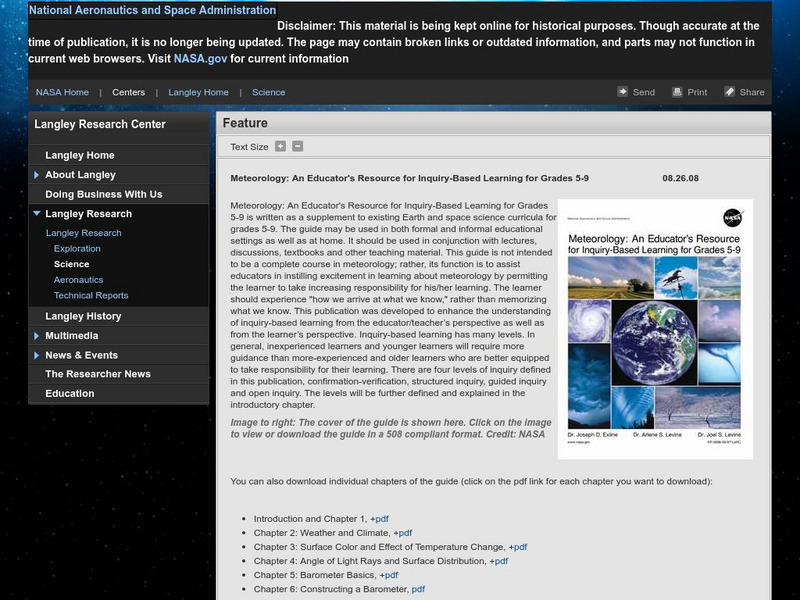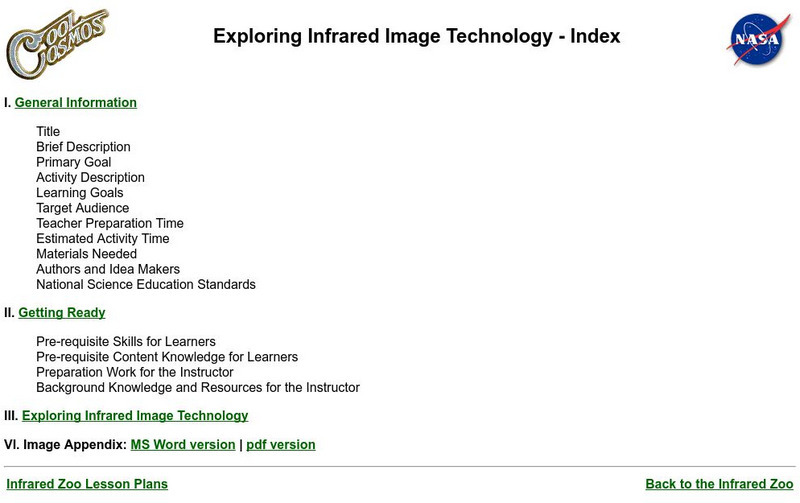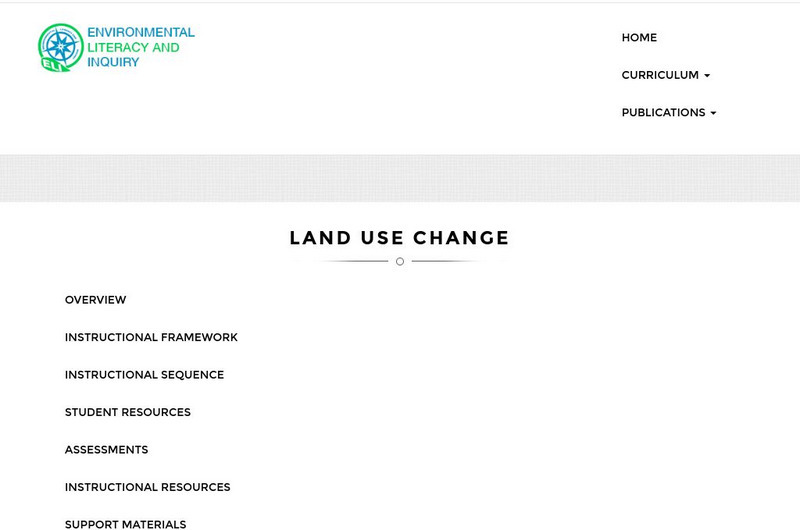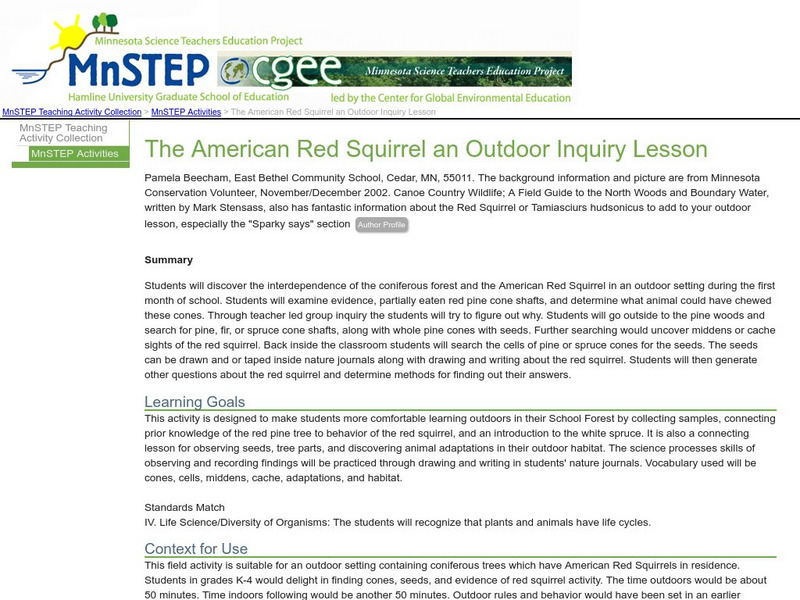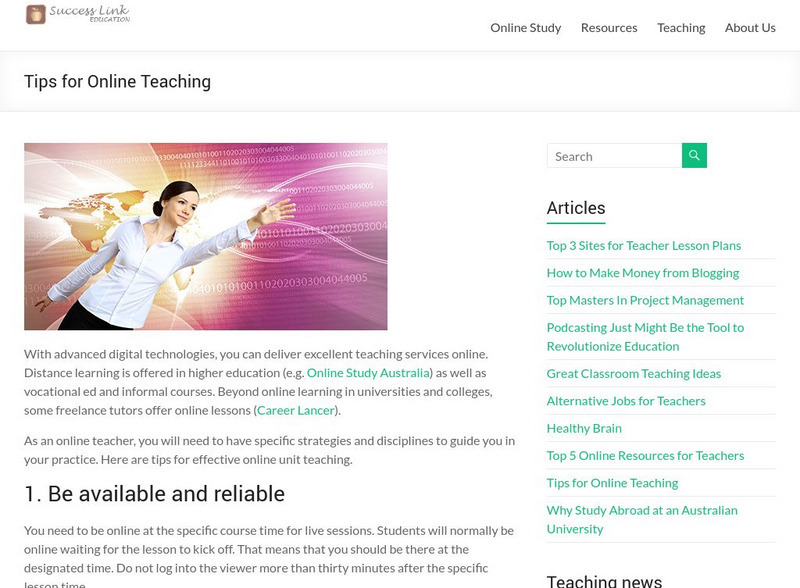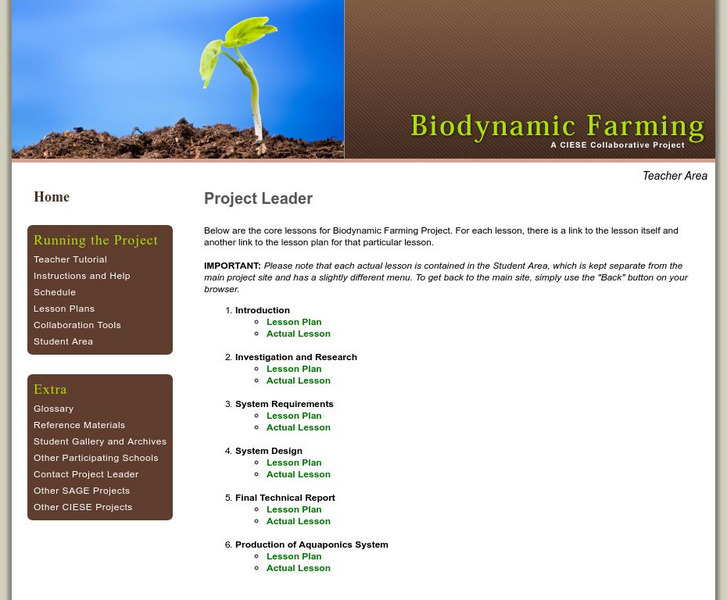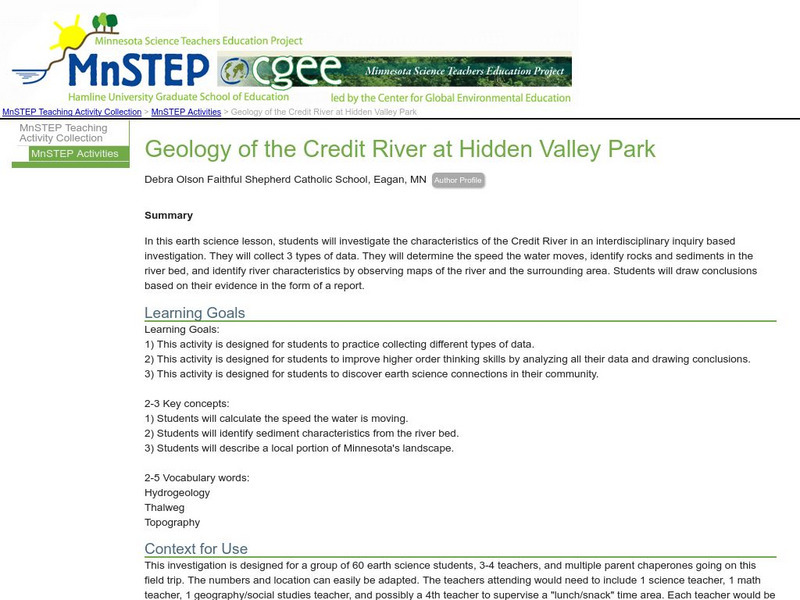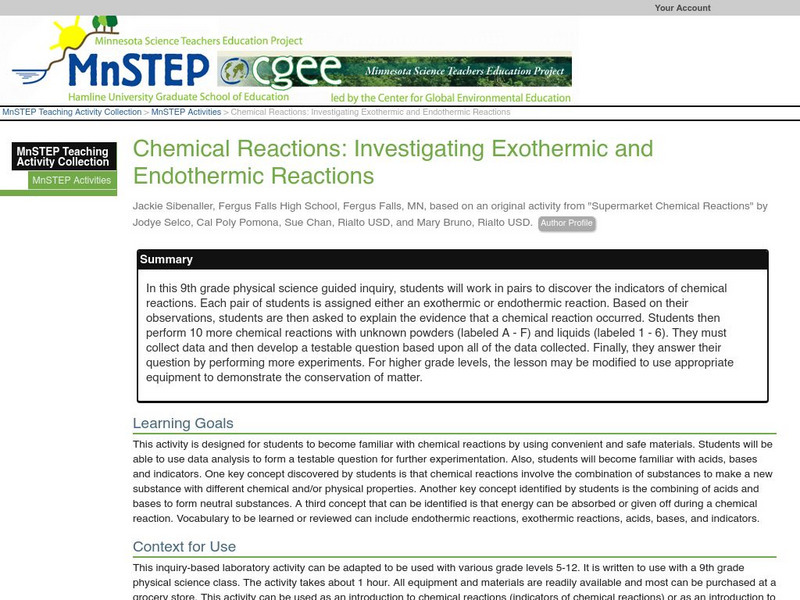PBS
Wnet: Thirteen: Ed Online: What Do Inquiry Based Lesson Plans Look Like?
Inquiry-based lesson plans are usually referred to as "facilitation plans," to help teachers remember their role as facilitator of learning, rather than fount of all wisdom. The notion also helps teachers structure lessons more loosely...
University of Illinois
University of Illinois: Inquiry Page: Learning Begins With Questions
What exactly is inquiry-based learning? Use this website to learn more about this unique learning style.
California Institute of Technology
Infrared Zoo Lesson 3: The Invisible Zoo
How do biologists and zoologists use infrared technology to learn how warm and cold-blooded animals thermoregulate their internal body temperature? Have your young scholars explore this phenomenon using this great lesson plan.
Smithsonian Institution
Smithsonian Science Education Center
Various middle school science resources from the Smithsonian Institution.
NASA
Nasa: Meteorology
Educator's resource guide to be used as a supplement to existing curriculum and to enhance the understanding of inquiry-based learning from both the educator/teacher's perspective as well as from the learner's perspective. Individual...
ReadWriteThink
Read Write Think: Digging Up Details on Worms: Using Science in an Inquiry Study
A lesson plan based on a study unit of earthworms, using the inquiry model to integrate scientific processes with literacy practices. Instruction plans, related resources, and standards are included.
Science Education Resource Center at Carleton College
Serc: Investigating Sound: A Lesson in Length and Pitch
For this classroom guided inquiry lesson, students will rotate through five stations of various sound instruments to look at how length affects pitch. The five sound stations include: straw flutes, xylophone, water phone, palm pipes, and...
California Institute of Technology
Exploring Infrared Image Technology
This NASA lesson plan explores the technology of infrared imaging. Students will use infrared images of everyday items to explore infrared technology.
Other
Lehigh University: Energy
An inquiry-based science unit for middle school students centered on the world's energy sources. The lessons integrate technology and lab activities while teaching about energy sources, production, and consumption.
Other
Lehigh University: Land Use Change
An inquiry-based science unit for middle school students centered on how human activities affect environmental changes related to land use. The lessons integrate technology and lab activities while teaching about today's land use and how...
Other
Digital Library for Earth System Education: Teaching Box: Essentials of Weather
A suite of lessons focusing on the basic elements of climate and weather. Inquiry-based exploration of extreme weather events and the factors of weather including clouds, wind, air pressure, temperature, and the water cycle.
Science Education Resource Center at Carleton College
Serc: Mn Step: The American Red Squirrel an Outdoor Inquiry Lesson
For this activity, pupils are presented with red pine cones that have been partly eaten by the American Red Squirrel, a fact that is not divulged to them at this stage. After a discussion of the possibilities, the class takes a walk in...
Success Link
Success Link: Dry Ice Lab/demonstration How Cool It Is!
A lesson plan using dry ice to show the four states of matter. Included are inquiry-based questions to use as part of the demonstration.
Center for Innovation in Engineering and Science Education, Stevens Institute of Technology
Ciese: Biodynamic Farming
During this module students learn about biodynamic farming through hands-on activities that culminate in having multiple schools collaborate to design subsystems that are combined to make a working aquaponic system. During the SAGE...
Science Education Resource Center at Carleton College
Serc: Investigating Projectile Motion: Creating a Catapult
This activity is for 9th grade physical science young scholars. It begins with an inquiry-based activity using a projectile motion computer simulation. It culminates with students building a catapult; applying and connecting science...
Alabama Learning Exchange
Alex: Souper Scooper
This hands-on, inquiry based lesson is an extension of the AMSTI Science Module, Solids and Liquids. Students use nonstandard units to measure beans in a soup mix. Students predict how many beans will be in a scoop. Students group beans...
Science Education Resource Center at Carleton College
Serc: Geology of the Credit River at Hidden Valley Park
For this earth science lesson, young scholars investigate the characteristics of the Credit River in an interdisciplinary inquiry based investigation. They will determine the speed the water moves, identify rocks and sediments in the...
North Central Regional Educational Laboratory
Ncrel: Human Body Systems Resource
What do you know about the different human body systems? This site features information on each of the different systems. Students and teachers will benefit from this comprehensive resource.
Alabama Learning Exchange
Alex: Where Did You Get Those "Jeans"?
This lesson plan can be interdisciplinary involving science, mathematics, and language arts. The primary nature of the lesson plan is inquiry, project, and technology-based. In science this project is a culminating activity in the...
Science Education Resource Center at Carleton College
Serc: Chemical Reactions: Investigating Exothermic and Endothermic Reactions
In this 9th grade physical science guided inquiry, students will work in pairs to discover the indicators of chemical reactions. Each pair of students is assigned either an exothermic or endothermic reaction. Based on their observations,...




